How to Adjust Glasses

Reviewed by
Maria Horan FBDO
When getting prescription glasses, knowing specific measurements, such as Pupillary Distance (PD) can be essential to find the frames that will fit you the best.
However, with time, parts of your eyewear can often loosen and if you wear glasses regularly, you know how uncomfortable that can be.
Luckily, there are a few ways to adjust them to improve fit for comfort and the better vision.
How to adjust your glasses at home
New glasses, or glasses you wear often, can be misaligned for different reasons. Before bringing them to an optician, there are easy ways you can adjust your glasses yourself and fix the most common issues.
The first thing to consider when learning to adjust glasses is the frame material. Metal frames and plastic frames will need to be handled differently.
For instance, most plastic frame glasses do not have adjustable nose pads. However, nowadays, many plastic frames do have fixed pad bridges for a more comfortable fit.
To tell whether or not it’s necessary to adjust glasses, set the glasses upside down on a flat surface with the sides open, the sides should both be sitting flat on the table and not rock. If they do, they might need some small adjustments.
DID YOU KNOW?
Did you know that adjusting glasses frames depends on the material: metal frames can be bent for a snug fit, but acetate frames need heat to become flexible. Meanwhile, titanium frames are super strong and often require professional tools to adjust properly.
How to adjust glasses if the lenses are different distances from your eyes
Problem: My lenses feel uneven.
Solution
If one lens sits closer to your eye than the other, it likely means your frame is slightly twisted.
While minor adjustments can sometimes be made at home, it’s best to visit an optician to ensure a precise fix without the risk of damaging your glasses.
How do I keep my glasses from sliding down my nose?
Problem: My glasses keep falling down my face
Solution
If the frames are made of metal, the answer can be to adjust the nose pads to raise or lower the lenses and improve the fit.
If you have adjustable nose pads, simply push the nose pads closer together with your fingers until they sit comfortably on your nose without leaving marks. If your nose pads leave marks, push them out to loosen them.
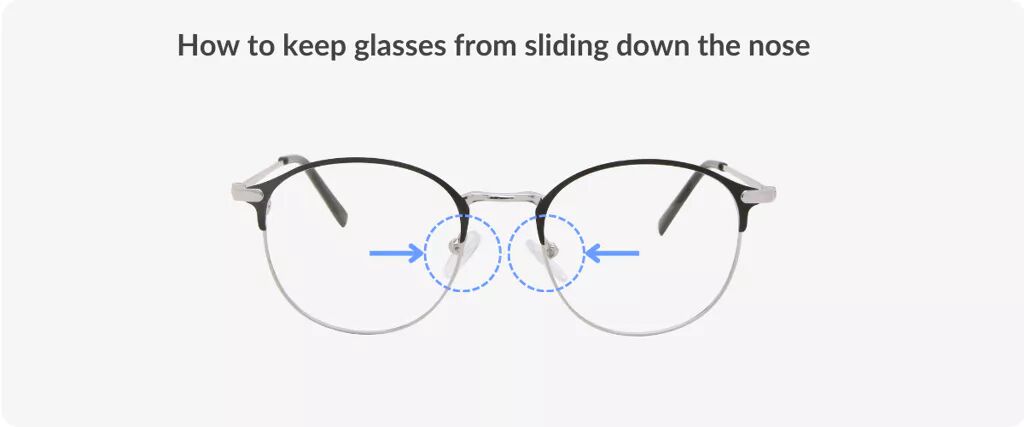
If your frames don’t have nose pads, the problem is likely due to the temple arms. We will cover this next.
How do you adjust glasses around your ears?
Problem: My glasses are too tight around my ears or sliding down.
Solution
If your glasses are too tight around your ears, bend the tips of the temple arms out and up. This might be easier for wire rim frames.
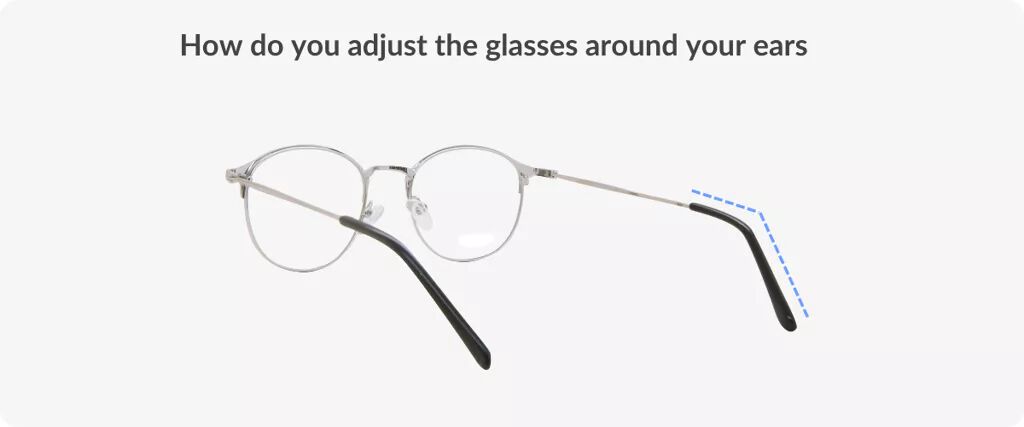
If your glasses don’t bend easily (this is usually the case with acetate or plastic glasses), you can heat them where you intend to bend them. A good way to do this is by placing the temple arm tips in a bowl of warm water for 30 seconds each before bending them.
Make sure the heat source does not touch the lenses, as it can ruin the coatings and cause damage.
How to adjust crooked glasses
Problem: My glasses feel bent
Solution
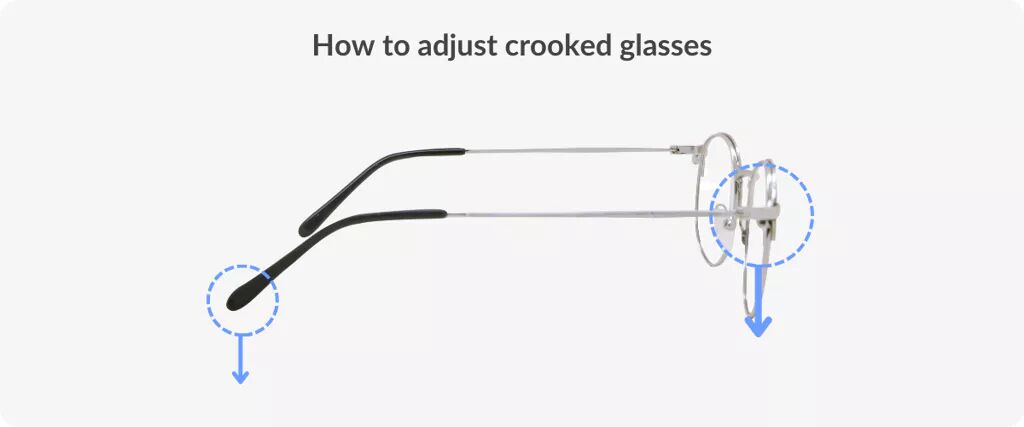
For lenses at different heights, you’ll need to adjust the glasses’ arms. If the left lens is higher than the right, you’ll want to bend the temple up at the arm’s hinge on the right side. Do the opposite if the right lens is higher than the left one.
How to tighten glasses with a screwdriver
All types of eyeglasses have hinges held together by tiny screws. These screws can come loose and their tightening is one of the most common glasses adjustments.
It’s important to check if the screws are loose regularly to avoid losing them. If they are, you might need to use a screwdriver to adjust them.
Most glasses repair kits include screws and a small screwdriver specifically made for glasses.

With the help of the screwdriver, carefully tighten the screws at the corners of the temples. Tighten them as much as possible, then loosen them half a turn to ensure no strain is put on the sides.
Avoid fixing your glasses yourself if a screw comes out or an arm separates. Instead, get your spectacles adjusted by an optician.
Ask an optician for optimal glasses adjustments
If you’re unsure about adjusting glasses yourself, you can always go to an optician for help.
Some types of eyeglasses, such as rimless and semi-rimless ones, can need more care and experience as they are more fragile than full-rim eyeglass frames. Opticians are also your best option if you need to adjust metal frames, or memory plastic frames.
You may also want to go to a professional to adjust nose pads. Adjusting nose pads can be tricky so unless you have experience doing so, it’s best to entrust it to someone who knows how to avoid common mistakes.
Feel free to contact one of our certified opticians for questions on adjustments, they can advise you on what the best course of action is in your situation. You can also check out our Optical Center, where you can find everything related to eye care and glasses.
Related articles
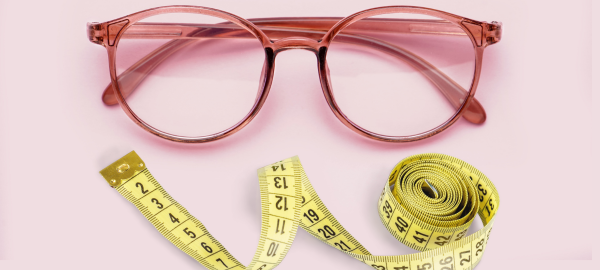
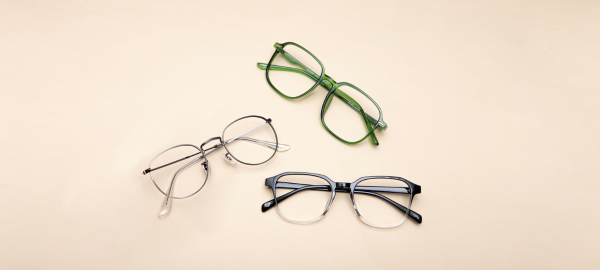
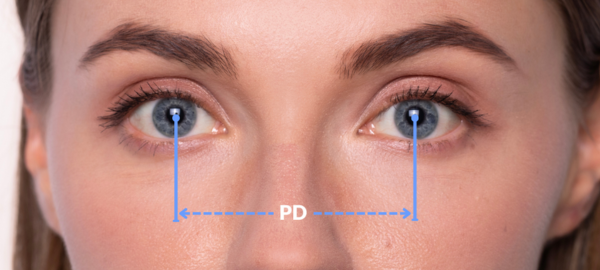
Related articles











































